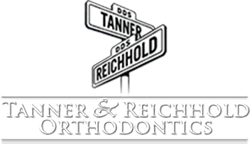Why are there some children as young as seven or eight already in braces? Well, these children are in Phase I orthodontic treatment. Many young children exhibit early signs of jaw or bite problems such as excess overbite, narrow jaws and crowding. In order to modify and correct these potentially negative dental growth patterns, the orthodontist “sets the stage” in Phase I and completes the treatment later in Phase II once all of the permanent teeth are present. In this way, while the child’s jaws are rapidly growing, the orthodontist can guide jaw growth and tooth eruption towards a stable, healthy and attractive result.
So what exactly is Phase I orthodontic treatment? It is early interceptive orthodontic care that precedes the placement of full-mouth braces. Active Phase I treatment usually takes between 12 to 18 months to complete and it can range from a simple retainer or headgear to placing braces on the front teeth and expanding the arches.
When is Phase I orthodontic treatment done? Typically it is done when the front teeth, or the four upper and the four lower incisors are in place. This is usually between the ages of 7 and 9 depending on how rapidly these teeth erupt and the severity of the orthodontic problem.
What happens after Phase I orthodontic treatment has been completed? In most cases, retainers are placed to provide the young patient’s teeth with a resting period while the remaining permanent teeth erupt. Periodic recall appointments are scheduled every 3 to 6 months to supervise the eruption of the permanent teeth and to monitor the correction achieved during Phase I treatment.
What is Phase II orthodontic treatment and why is it necessary? Even though a child may have completed a first phase of orthodontic treatment, over half of the adult or permanent teeth have yet to erupt. The permanent teeth erupt into the mouth in two time periods. Usually, from about age 5 to about age 8½, the front four upper incisors, the front four lower incisors and the four back 6-year molars erupt. That accounts for 12 out of 28 teeth (not including the wisdom teeth). The remaining permanent teeth erupt into the mouth from about age 11 to age 13. Every tooth in the mouth has an ideal location in harmony with the lips, cheeks, tongue and other teeth. When this equilibrium is established, the teeth have the best chance of functioning properly, remaining healthy and looking attractive. Phase II involves placing braces on all of the teeth and this phase of orthodontic treatment takes between 18 to 24 months to complete. Final retainers are then delivered to hold the orthodontic correction.
What are the advantages of two-phase orthodontic treatment? The primary goal of two-phase treatment is to maximize the potential for an ideal, healthy and functional bite, and for an aesthetic and pleasing smile. Two-phase treatment can accomplish the following: improve jaw discrepancies, create more space for erupting teeth (thus encouraging proper alignment and reducing the need for extraction of permanent teeth in some cases), eliminate abnormal muscle habits, correct harmful crossbites, realign crooked or protrusive front teeth (thus reducing the chance for traumatic injury), and improve the young patient’s facial appearance (often resulting in enhanced self-esteem).
Are there any disadvantages of doing two phases of orthodontic treatment? Usually a child will begin Phase I orthodontic treatment at age 7 or 8 and eventually complete Phase II at about age 14. Obviously this a relatively long span of time (6 to 7 years) and some children feel like they have spent innumerable years going to the orthodontist and even show signs of burnout during Phase II. The other factor is expense. The cumulative costs of Phase I and Phase II orthodontic treatment are often as much as 50% more than waiting and just doing a single phase of treatment at age 13. For this reason, some orthodontists may try to simplify Phase I and only place space maintainers to help alleviate crowding. Many space maintainers can be billed under “dental” insurance instead of “orthodontic” insurance thus deferring some costs until later. In addition, some orthodontists will delay the start of treatment until age 12 or so and treat a child in one long phase by starting with a headgear when only a few baby teeth remain and then place full braces a year or so later once the last few permanent teeth erupt.
By Gary Reichhold, DDS
JUN

About the Author:
Dr. Gary Reichhold and his partner Dr. Stephen Tanner have been proudly serving families in Concord, Walnut Creek, Clayton, Pleasant Hill and the surrounding communities for over 20 years. Their office is conveniently located in central Contra Costa County and their experienced team is committed to providing you and your family with exceptional orthodontic care.